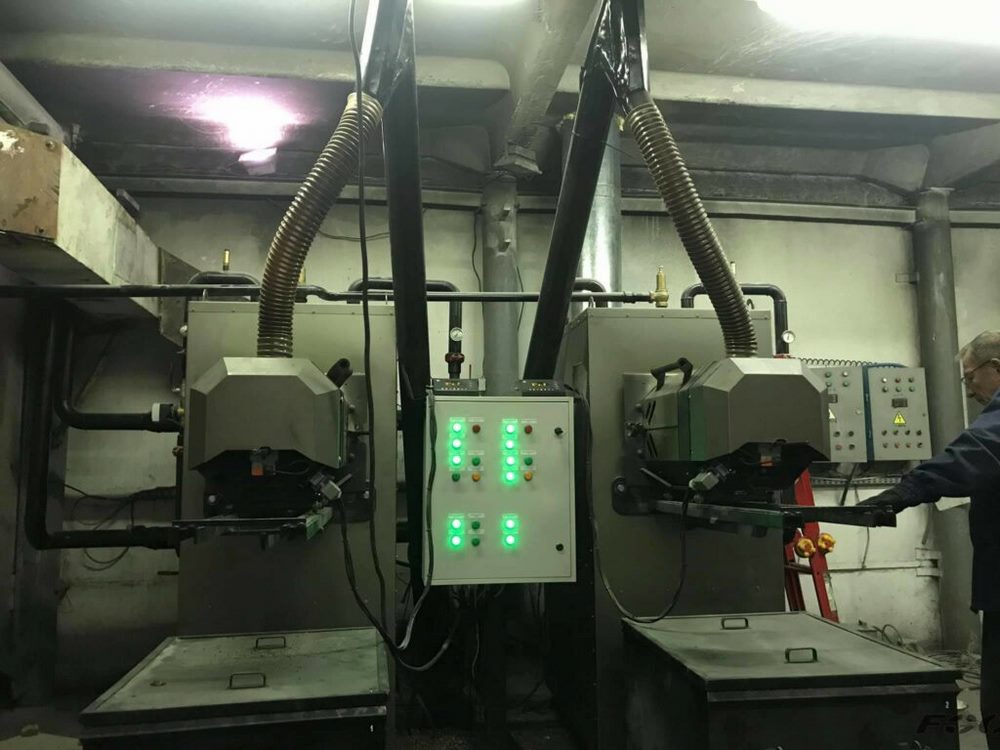Thermal diagram of a production steam boiler house
The principle of operation of an industrial steam boiler house consists in supplying process consumers with steam with a pressure of 1.4-2.4 MPa, which is used to heat water for hot water supply and heating. Water preparation is carried out in network heat exchangers installed in adjoining boiler rooms. This approach of central heating was considered the most economical in the past, but today the efficiency is also difficult to question. We decided to consider the principle of operation of an industrial steam boiler house, its thermal scheme and the specifics of work. The connection diagram of the industrial boiler room will help the engineers of heating technicians of production who do not have work experience that was fundamental in Soviet times.
It must be said that steam consumers for their needs take a small amount of heat to provide heating, ventilation and hot water supply. Usually a closed system is used, already mentioned in our publications. In such boiler houses, water heating for hot water supply and, possibly, heating occurs in local heat exchangers and does not affect the overall water intake.
The schematic thermal diagram of a production boiler house, designed for supplying small amounts of steam to consumers, is shown in the thermal diagram.
As you can see, this is a rather complex heating scheme, which is significantly different from those that our clients are used to seeing in compact boiler rooms. The principle of its operation consists in the following production processes.
How heating water is heated
The raw water pump delivers water to the purge water cooler, where it is heated by the buffer heat of the purge water. At the next stage, it is heated to 20–30 ° C in a steam-to-water raw water heater. After it is sent to chemical water treatment.
The finished chemically purified water enters the deaerated water cooler, where it is heated to the temperature set in the system. Then the water is heated in the heater with steam. Before entering the deaerator, part of the water is passed through the deaerator vapor cooler.
Heating of finished heating water
The preparation of the heat carrier or hot water for consumption in local boiler houses is carried out sequentially in two network heaters with steam. The resulting condensate is sent to the deaerator head. It also collects liquid from external steam consumers, if any. The same heat exchangers are available in the central boiler room. They are discussed in this description.
Heating water in a steam boiler room
Water heating in the deaerator is carried out with steam from boilers and steam from a continuous blowdown expander. The purge water after cooling during continuous purging is discharged into a bubbler (purge well).
Prepared water after the deaerator with a temperature of 104 ° C enters the steam boilers. Make-up water also comes after the deaerator, but is pre-cooled by the make-up water cooler to 70 ° C. This is done before feeding it to the make-up pump.
The use of a deaerator in water preparation is economically justified, but it is possible only in closed heat supply systems, where the consumption of the make-up water mass is low.
In open systems with a high flow rate of make-up water, two deaerators are installed. One prepares the feed water, the other prepares the make-up water. For steam boilers, atmospheric deaerators are usually used.
Reducing units for reducing steam pressure
In some cases, process consumers require lower pressure steam. For these purposes, a reduction unit or a reduction-cooling unit is used to reduce the pressure and temperature of the steam, respectively.
Industrial boiler room connection diagram: operating modes and calculations
The calculation of the operation of thermal circuits for industrial boiler houses is carried out in three modes:
- maximum winter;
- coldest month of the year;
- for the summer month.
For these purposes and a technical and economic justification, the heat and material balance is used, calculated for each element of the system. If a change in the phase state of the coolant is not implied, then the balance is described by the formula:
where GOh, Gn - total consumption, respectively, of the cooled and heated heat carriers, kg / s; cOh, cn - average specific heat capacity of two types of heat transfer agents, kJ / (kg · ° C); - respectively, the initial and final temperatures of the coolant to be cooled, ° C; - initial and final temperatures of the heated heat carrier, ° C; η is the efficiency of the heat exchanger.
When the phase state of the coolant to be cooled changes, a different balance formula is used:
where are the initial and final specific enthalpies (heat content) of the coolant being cooled, kJ / kg, respectively.
If the heated coolant changes its phase state, a calculation is used according to the formula:
where are, respectively, the initial and final specific enthalpies of the heated coolant, kJ / kg.
If both coolants change their phase state, then the balance equation takes the form:
As a result of calculations, boilers are selected that provide the required steam capacity and steam parameters.
Order a boiler room project for production







